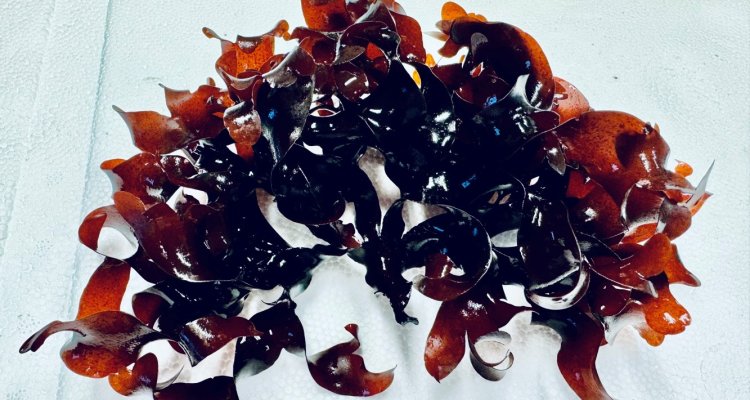
Project
Integrating upstream and downstream processes for enhancing protein extract quality of Dulse
The red seaweed dulse, Palmaria palmata, has been promoted as an alternative protein source for food and feed applications. However, its integration into the competitive market of alternative protein for food remains challenging.
This is due to many factors, such as the variability and quality of its protein content linked to cultivation, pre-treatment conditions, and low digestibility due to the high content of anionic polysaccharides, neutral polysaccharides, phenolic compounds, and proteins attached to the cell wall. In that regard, downstream processes, namely enzyme-assisted extraction, green solvent, and alkaline extraction, have been developed to extract proteins from seaweed while avoiding these challenges.
On the other hand, while focusing on increasing the extraction yield and optimizing the process parameters, the quality of the protein extract (amino acid profile and digestibility) is not always guaranteed. In addition, these extraction processes are also linked to cultivation and pre-treatment conditions that have an additional impact on protein quality. So, connecting and integrating upstream processing (cultivation) to downstream processing (pre-treatment, extraction) and product quality should be investigated further. In this proposal, cultivation strategies to achieve higher protein biomass will be adopted.
The isolation of protein from harvested pre-treated (dry and wet) biomass using enzymatic, deep eutectic, and alkaline techniques will be applied and evaluated. Microscopy techniques will be used as a tool to locate protein in biomass before and after extraction. Finally, the techno-functional properties of extracted proteins will be tackled.
Background
Red seaweed Palmaria palmata is being considered as an alternative protein source for food. However, integrating it into the competitive market of alternative proteins remains challenging due to several reasons. First, dulse varies in protein content and amino acid, which is linked to cultivation conditions, seedlings, and the season; therefore cultivation strategies should be considered to generate a higher protein biomass. Then, dulse has a low protein digestibility due to its high content of anionic polysaccharides, neutral polysaccharides, phenolic compounds, and proteins attached to the cell wall. Hence, protein separation techniques have been developed to deal with the low digestibility of protein in seaweed. Nevertheless, previous studies on the separation of dulse proteins had overlooked pretreatment, which significantly influences the quality and techno-functional properties of extract as well as the efficiency and cost of extract. In addition, dulse contains glycoproteins attached to cell walls, which are challenging to isolate, and some pose antinutrient properties. Finally, in addition to those drawbacks, the techno-functional properties of dulse protein extract should be further evaluated as they determine the compatibility of dulse protein extract with typical food ingredients.
Project description
This project aims to integrate upstream and downstream processes of dulse as protein sources by addressing the following questions:
- How do seedling and nutrient enrichment affect the protein yield and profile in dulse biomass?
- Where are proteins located in dulse biomass/residue?
- How does biomass pre-treatment affect extraction efficiency and protein/amino profile of dulse protein extract?
- What are the nutritional and techno-functional properties of dulse protein extract shaped by different biomass pretreatment and extraction techniques?